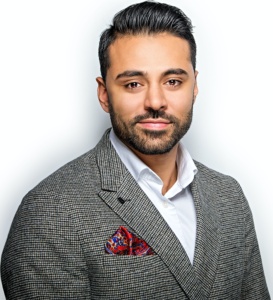In March 2020, Airbnb CEO Brian Chesky faced a nightmare: an 80% revenue drop in 8 weeks. Global travel had vanished. His team was paralyzed by conflicting data—some analysts urged cuts, others pushed bold bets. But Chesky’s gut said one thing: “The future of travel isn’t going back to normal.”
This is the modern leader’s dilemma: Data promises certainty, but instinct demands trust. Over 68% of executives admit delaying critical decisions due to conflicting analytics (Harvard Business Review). Yet, hesitation can cost startups everything.
This post isn’t about choosing data or intuition—it’s about mastering the hybrid approach used by leaders like Chesky, Satya Nadella, and Reed Hastings. You’ll learn:
- 3 battle-tested frameworks to avoid analysis paralysis.
- When to trust data vs. gut (with a free cheat sheet).
- How Airbnb’s “instinct-first, data-second” pivot saved their business.
Why Hybrid Decision-Making Wins in 2025
In 2010, Blockbuster ignored streaming data and clung to gut-driven loyalty to DVD rentals. By 2023, AI-driven Netflix dominated entertainment. But pure data obsession has pitfalls too: Quibi raised $1.75B using algorithms to target Gen Z—then flopped because it ignored cultural nuance.
The Sweet Spot:
1️⃣ Data for repeatable scenarios (e.g., pricing A/B tests).
2️⃣ Instinct for unprecedented crises (e.g., pandemics, market crashes).
3️⃣ Frameworks to merge both.
Framework #1: The Cynefin Model – Navigating Complexity
Developed by IBM, the Cynefin Model helps leaders classify challenges:
Case Snippet: When Microsoft invested $10B in OpenAI, Satya Nadella used Cynefin to label AI as a complex domain—prioritizing iterative experiments over rigid ROI models.
Pro Tip: In chaotic scenarios (e.g., server outages), speed beats precision. Assign a “chaos pilot” to make instinct-driven calls.
Framework #2: The OODA Loop – Speed in Uncertainty

Born from fighter pilot strategy, the OODA Loop is perfect for fast-paced startups:
- Observe: Collect real-time data (e.g., live customer sentiment dashboards).
- Orient: Filter through team expertise and past patterns.
- Decide: Blend data trends with gut checks (e.g., “Does this pricing feel right for our brand?”).
- Act: Launch small bets (e.g., a 2-week MVP test).
Example: Spotify updates its playlist algorithms weekly using OODA. Data shows listener drop-offs, but editors intuitively tweak song orders for “flow.”
Framework #3: The Bayesian Mindset – Updating Your Priors
Reed Hastings didn’t pivot Netflix from DVDs to streaming overnight. He used Bayesian thinking:
- Start with a “prior”: A hypothesis (e.g., “Streaming will grow”).
- Update with data: Track metrics like broadband adoption rates.
- Adjust incrementally: Shift resources gradually as evidence builds.
Metaphor: Think of it like hiking—you start with a map (prior), but adjust your route as you encounter rivers (new data).
When to Trust Data vs. Gut: A Leader’s Cheat Sheet
Case Study Deep Dive: Airbnb’s COVID-19 Pivot
The Crossroads:
- Data: 80% revenue drop, cancellations skyrocketing.
- Gut: Chesky sensed travel wouldn’t rebound globally.
The Hybrid Decision:
- Instinct: Pivot to local stays and virtual experiences.
- Data: Tracked rising searches for “road trips” and “workations.”
- Action: Launched “Frontline Stays” for healthcare workers and slashed marketing spend on cities.
Result:
By 2021, revenue surpassed pre-pandemic levels by 25%.Chesky’s Lesson: “Data tells you what’s happening; instinct tells you why.”
Tools to Systematize Decision-Making
- Decision Journals: Document your reasoning pre- and post-decisions.
- Pre-Mortem Workshops: Ask teams: “Imagine this failed—why?” to surface blind spots.
- AI Dashboards: Tools like Tableau highlight anomalies (e.g., sudden churn spikes).
Conclusion: Building Your Decision Muscle Memory
Great leaders aren’t data or intuition-driven—they’re adaptive. Start small:
- Use Cynefin to categorize one challenge this week.
- Run a 7-day OODA experiment on a low-risk project.
Final Takeaway: Decision-making is a muscle. Train it with frameworks, not guesswork.


